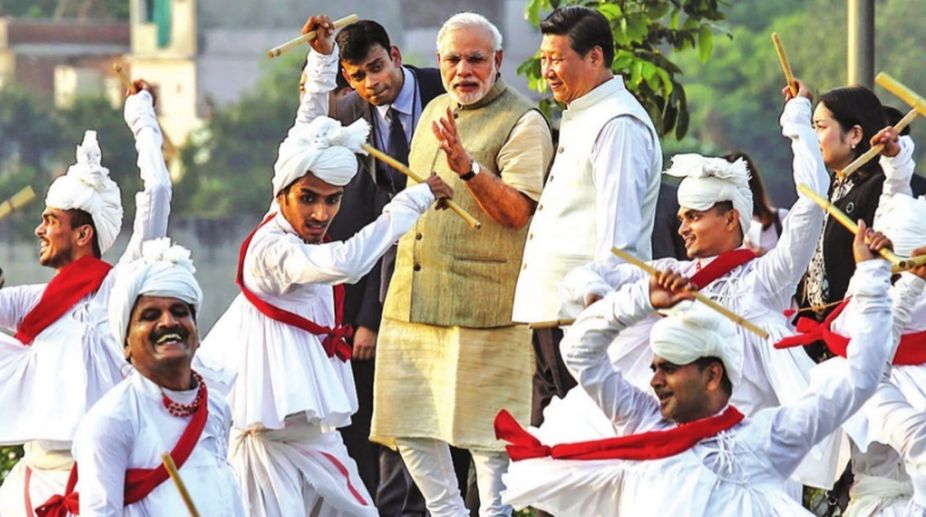On 20 January 1946, Jawaharlal Nehru, who later became India's first premier, said to my father Paul Feng of China's Central News Agency: "If China and India hold together, the future of Asia is assured."
Yet, today, the answers to two questions that arise from those 12 words – namely "what needs to be held" and "where can the holding take place" – remain elusive for the two nations, for Asia and for the world in general.
Advertisement
For the former question, author Manoj Das answered it best on 7 January 2001, when he wrote in The Hindu newspaper that, with their respective complexities, there simply is "the great need to know one another".
For the latter question, it is urgent to locate a venue where the two Asian giants can feel assured of being understood, admired and respected for their histories and cultures; and where a start can be made to reduce and mitigate mistrust and misunderstanding.
Perhaps the time has come for Singapore to serve as a "meeting ground" for these two Asian giants.
The timing is perfect because, with the launch of the Belt and Road initiative by Chinese President Xi Jinping, there has literally been a U-turn in the Chinese mindset, which is now oriented towards connecting with the world economically, politically, technologically and culturally. China wants to go where it has never been before, geographically as well as in all human arenas.
India and China have populations of 1.2 billion and 1.4 billion respectively. Except for the 1962 border conflict, they have had historically peaceful interactions. Notably, Buddhism from India literally transformed China several thousand years ago. Also, India was the first noncommunist nation to recognise the People's Republic of China. Both are intellectually, technologically and entrepreneurially modern nations with enlightened people. Hence, to pursue the Belt and Road initiative, China simply cannot ignore India – nor can India afford not to be part of this effort.
Yet, in the recent Belt and Road Forum for International Cooperation, held in Beijing on May 14-15 and attended by 29 heads of state, India's Foreign Secretary S. Jaishankar stated clearly that it would not participate. India's absence put a dent, albeit temporarily, on the collaborative efforts.
This, I believe, is where Singapore can step in and play a critical role.
Singapore has in the years since it became independent in 1965 developed into a First World nation. Embedded in one of the world's most complex and convoluted regions, it was able to find a balance and flourish. Indeed, it is a rare nation that is a comfort zone for both China and India. It has a very multiracial and harmonious population, including Chinese and Indians.
Furthermore, with its per capita income reaching US$55,000, Singapore has invested its wealth in building a knowledge economy with world-class universities and research institutions.
With its First World perspective, Singapore could consider how to become a meeting ground for the two great powers – from which they could collectively vault ahead in the 21st century.
And such a meeting ground is needed because, currently, there are only several thousands of people in India who understand English and Chinese and, among the 3,000 or so universities in China, only a handful have departments embracing South Asia research as their mission.
Even so, with China pushing the Belt and Road initiative vigorously, there is great incentive for people globally to want to work with China and India. To do so, they need to understand in depth the ways and means adopted by the two Asian giants. My suggestion is for Singapore to set up, with sustainable and sufficient funding, the world's largest and most sophisticated China and India research centre. Singapore could seek to draw in from around the world the best intellects with deep knowledge of China and India.
The centre's mission would be for the world to have a comprehensive understanding of the two nations, as well as for them to better understand each other.
With this, Singapore could emerge as the "go to" place for indepth learning and understanding about India and China. It could also be a place where China and India seek to learn about each other so as to eliminate mistrust and misunderstanding.
Such a centre would be a fitting contribution by Singapore to enhancing understanding of Asia.
Seven decades ago, Nehru first articulated his vision of China and India holding together to assure the future of Asia. Today, that remains elusive. It would, however, be one of history's great ironies if the Belt and Road initiative were to become a driving force for the realisation of Nehru's dream, and if that were to come about through Singapore emerging as a meeting ground for the two Asian giants and humanity in general.
To paraphrase novelist Victor Hugo, this is an idea whose time might well have come.
The writer is special adviser to the rector and director of global affairs, University of Macau. The Straits Times/ANN.











